- Register
- Log in to Tune-In
- Wishlist (0)
-
Shopping cart
(0)
You have no items in your shopping cart.
Beatles News
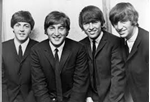
The Beatles bring their songs “I Want To Hold Your Hand” and “All My Loving” back to the U.K. charts ...
The Beatles launched their career with a run of hit singles that seemed like it would never end. They introduced themselves to the world with dozens of tunes that bounded up the charts and turned them into global superstars nearly overnight—and which ensured they remained among the bestselling and most adored names in the music industry for decades to come.
Two of the band’s earliest singles are back on the charts in the United Kingdom this week. The tracks, which have already sold incredibly well since they were released more than a half-century ago, both manage to debut on tallies they’ve never reached before—several of them at once, actually.
“I Want To Hold Your Hand” is the bigger win between the two, and it easily outpaces the other new arrival from The Beatles. The smash nearly brings the rockers back to the top spot on several lists, but it fails to conquer by just one space—though it does enter the top 10 on all three rosters it reaches this time around.
The Beatles debut “I Want To Hold Your Hand” at No. 2 details
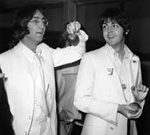
It’s not everyday that a major music icon asks you for advice. However, that did happen to Art Garfunkel when John Lennon asked him for advice on a pretty serious matter. As the story goes, the fate of one of music’s most beloved partnerships–Lennon and Paul McCartney–was left up to the advice of Garfunkel. He humbly accepted the challenge. Learn more about Garfunkel and Lennon’s conversation, below.
According to Garfunkel, Lennon pulled him aside amidst a get together with the former Beatle, Yoko Ono, and David Bowie. Despite having his partner and a longtime friend there, Lennon opted to ask Garfunkel–whom he had only met that day–for advice.
“I have my great memory of John Lennon when I met him that one night with Yoko Ono and David Bowie,” Garfunkel once explained. “It was the mid-70s, and we were coming back from some show we mutually did. So, we go back to the Dakota [John’s apartment], Bowie was with us. And John pulls me to the bedroom.”
Apparently, Lennon was in talks with McCartney about getting back together. According to Garfunkel, Lennon seemed very serious about the proposition. Before he jumped back into things again, details

Rumors of who will play the Beatles immediately began popping up as soon as it was announced that Sam Mendes was set to direct a Sony Pictures four-part biopic series about the Fab Four.
As of Wednesday, Paul Mescal is attached to the movies, likely as Paul McCartney, and Barry Keoghan will portray Ringo Starr (according to Starr himself). Charlie Rowe is rumored to take on George Harrison, while Harris Dickinson is said to be attached as John Lennon.
However, Dickinson played coy when I asked him about the casting Wednesday night at the premiere of his new erotic thriller “Babygirl.”
“It would be amazing to do that,” he said, smiling. “I think the idea of Sam teaming up to do something like that would be incredibly exciting. Obviously, John Lennon is a very complex role, a pretty formidable force to try to do. It would be cool.”
When I asked if he’s signed on for the project, Dickinson laughed and said “we’ll see,” before being ushered to his next interview on the carpet.
Source:Marc Malkin/ variety.com

In photos obtained by OK!, the former Beatles member could be seen greeting fans outside of the Ritz hotel in Madrid, Spain, on Monday, December 9.McCartney, who was wearing hearing aids at the time, appeared in great spirits as he happily made himself visible to a crowd of supporters. For the occasion, he stayed warm with a stylish flannel jacket. His gray facial hair formed a light mustache and scruff around his jawline.After greeting fans, he headed into a black vehicle outside of the lavish property, where he had been staying with his daughter Mary, 55, during the latest stop of his Got Back Tour.
Paul had back-to-back shows at the WiZink Center in Madrid on Monday and Tuesday, December 10. His tour — which began in April 2022 — is scheduled to end on Thursday, December 19, at The O2 in London, England.
Being spotted with hearing aids in his ears isn't new for the "Here Comes the Sun" singer, as he's been wearing the assisted device for years due to problems resulting from performing on stages worldwide for more than six decades and counting.
Source: MSN
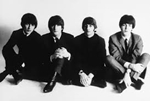
The incredible true story behind The Beatles’ rise to fame will be the subject of four upcoming biopics, each told from a different band member’s perspective.
More than 50 years since they went their separate ways, the films will mark the first time that the legendary band has sanctioned the use of their music for a scripted film.
The biopics will each tell the childhoods of John Lennon, Paul McCartney, George Harrison and Ringo Starr, and are thought to intersect at major moments – iconic performances and splits, for example. From casting rumours to plot details, here is everything we know about the four upcoming films so far. Who has been cast in The Beatles biopics?
So far, numerous actors have been linked to the project, and while no official announcements have been made, those with knowledge of the biopics have teased who may be playing who.
In November, Ringo Starr seemed to confirm rumours that the Irish actor Barry Keoghan will play him in the films.
“I believe he's somewhere taking drum lessons,” he said on Entertainment Tonight. “I hope not too many.”
Elsewhere, Ridley Scott hinted that Paul Mescal will also have a ro details
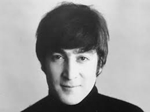
John Lennon, an iconic figure in the music world and a driving force behind The Beatles, continues to be remembered with reverence and sorrow 44 years after his untimely death. A celebrated singer-songwriter, musician, and activist, Lennon rose to global fame as The Beatles's co-lead vocalist and rhythm guitarist. Alongside Paul McCartney, he forged what is widely regarded as the most successful songwriting partnership in music history.
On December 8, 1980, Lennon’s life was tragically cut short outside his New York City residence, the Dakota. His killer, Mark David Chapman, gunned him down in a meticulously planned attack that sent shockwaves across the globe. Four bullets struck Lennon as he entered the apartment building and he succumbed to his injuries on the way to the hospital. His death marked a devastating loss to the music industry and his millions of fans worldwide.
According to reports by Radar Online, Mark David Chapman, who was just 25 years old at the time of the assassination, was later diagnosed as borderline psychotic. During his trial, it was revealed that he had spent months planning the killing. Convicted of second-degree murder, Chapman was sentenced to 20 years to life in prison, clai details

The best artists and songwriters can transcend their public image with their music, letting us know their true inner workings beyond the fame and fortune. John Lennon was one of the first songwriters to reveal his true feelings in that way.
John Lennon Starred in ‘How I Won the War’ & Ended Up Writing “Strawberry Fields Forever”
On the 1964 Beatles song “I’m a Loser,” Lennon told his listeners of his insecurity and lack of self-esteem. Listening to it, it’s understandable if you forget for a few minutes that you’re being addressed by a guy who was one of the most famous human beings in the world at the time.
Beatles for Sale is an album that doesn’t get its fair share of praise, at least when compared to the rest of The Beatles’ catalog. The timing of it, right between two highly hyped movie albums (A Hard Day’s Night and Help!) might have something to do with its relative anonymity. The fact there were no singles released from it also kept it somewhat in the background for years.
Listening to it now, you can hear how John Lennon and Paul McCartney were branching out a bit, both in terms of their stylistic choices and th details

Fans can really take ideas and run with them. It only takes one person to submit an interesting take on a song and soon the rest of its listeners will get on board with it. One particularly interesting case of that happening is Paul McCartney’s “Wonderful Christmastime.” This holiday anthem has a dark twist, according to some fans. Learn more about the creepy theory behind this track–and what McCartney’s take on it is–below.
The mood is right
The spirit’s up
We’re here tonight
And that’s enough
Simply having a wonderful Christmastime
Simply having a wonderful Christmastime
If you take this song at face value, it’s relatively simple. McCartney seems to be reveling in some festive fun. However, some fans have read something far more sinister between the lines. As the theory goes, the verses see McCartney and his fellow partygoers practicing dark magic while the chorus is their cover up scheme. In that context, the group attempts to act nonchalant when someone walks in, pretending to simply be having a wonderful Christmastime.
McCartney was once asked about this phenomenon. In response, he let the theorists down easy wit details
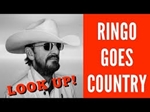
Guests in attendance at the gala event included a who’s who of London music royalty, including David Gilmour, Bob Geldof, Jools Holland, Jimmy Page and Ronnie Wood among others, who were treated to a first listen of Starr’s new country LP.
Produced by the legendary T Bone Burnett, Starr’s Look Up is his first country release in more than 5 decades, following his second solo album, Beacoup of Blues, which he released in 1970.
“I’ve always loved country music. And when I asked T Bone to write me a song, I didn’t even think at the time that it would be a country song – but of course it was, and it was so beautiful.” Ringo said of the new album. “I had been making EPs at the time and so I thought we would do a country EP -but when he brought me nine songs I knew we had to make an album! And I am so glad we did. I want to thank, and send Peace & Love, to T Bone and all the great musicians who helped make this record. It was a joy making it and I hope it is a joy to listen to.”
Starr will be bringing this new music to Nashville when he headlines the famed Ryman Auditorium on January 14 and 15, 2025 with additional U.S. dates planned for June 2024. details

The actor is rumored to be playing Paul McCartney in Sam Mendes' four films
NEW YORK, NEW YORK - NOVEMBER 20: Paul Mescal attends the "Gladiator II" New York Special Screening hosted by GQ and Paramount Pictures at The Whitby Hotel on November 20, 2024, in New York, New York. (Photo by John Nacion/Getty Images for Paramount Pictures)
Paul Mescal. John Nacion/Getty Images for Paramount Pictures
Ridley Scott may have inadvertently revealed some major casting news during a Q&A with Christopher Nolan last night in Los Angeles.
During a conversation with Christopher Nolan that followed a screening of Gladiator II at the Directors Guild of America, Scott confirmed his next project will be thriller The Dog Stars. When Nolan asked if Paul Mescal will star in the film, Scott initially said yes before correcting himself that Mescal’s schedule may prevent them from reuniting.
“Maybe,” Scott said, via The Hollywood Reporter. “Paul is actually stacked up, doing the Beatles next. So I may have to let him go.”
Mescal has been rumored to be part of Sam Mendes’ forthcoming Beatles films, which will focus on each of the Fab Four, Paul McCartney, John Lennon, George details
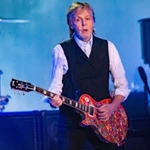
Paul McCartney has backed calls for laws to stop mass copyright theft by companies building generative artificial intelligence, warning AI “could just take over”.
The former Beatle said it would be “a very sad thing indeed” if young composers and writers could not protect their intellectual property from the rise of algorithmic models, which so far have learned by digesting mountains of copyrighted material.
He spoke out amid growing concern that the rise of AI is threatening income streams for music, news and book publishers. Next week the UK parliament will debate amendments to the data bill that could allow creators to decide whether or not their copyrighted work can be used to train generative AI models.
The amendments, championed by Beeban Kidron, would require operators of internet bots that copy content to train generative AI models to comply with copyright laws.
Source: Robert Booth/theguardian.com
details
A new video featurette has been posted on the late George Harrison’s social media pages featuring audio commentary from Harrison’s Traveling Wilburys bandmate—and Electric Light Orchestra frontman—Jeff Lynne about George’s guitar talents.
In the clip, Lynne shares his respect for Harrison’s slide-guitar skills. The video also features archival photos and film footage of the ex-Beatles legend playing guitar.
“I think George is the best slide player that I’ve ever heard,” Lynne says. “He’s so accurate on it, and he makes it sing, and he makes it cry, and he makes it do anything, really.”
Adds Jeff, “And he can hold out a pure note with just beautiful vibrato that is so even. And it’s that style, it’s the melodic aspect of it, but it’s also … soulful, bluesy. He can do it all.”
The video is accompanied by a segment of the 2024 mix of Harrison’s chart-topping 1973 solo tune “Give Me Love (Give Me Peace on Earth).” George’s slide playing is a highlight of the tune, which reached No. 1 on the Billboard Hot 100 in June 1973.
The updated mix of the track appears on details

Dedicated fans of the legendary Beatles musician John Lennon converged on Strawberry Fields in Central Park Sunday to dance, sing and remember the icon’s tragic death 44 years ago.
The grassroots gathering — which drew Beatlemaniacs from around the globe — sprung forth as it does every year on the 2.5-acre tract of impeccably manicured lawn named for one of the Beatles’ most famous songs.
“For the last 44 years, we’ve celebrated his life,” said Quent Kelleher, a 60-year-old native New Yorker who comes to the same spot every year on the anniversary of Lennon’s Dec. 8, 1980 murder outside his home a short distance from the park.
“My best friend called me up that night — he lives around the corner — and told me [Lennon] was shot,” Kelleher told The Post. “And we came out here that night, and we’ve been coming out here [since].”
“We’ve even had binoculars and seen Yoko Ono looking out the window up there watching,” Kelleher said, gesturing to The Dakota Apartments on 72nd Street, where she and Lennon lived before his death.
The music icon was fatally shot just before 11 p.m. that night details

Ringo Starr and his All Starr band are returning to the road in 2025 with a string of new tour dates.
The latest trek kicks off June 12 in Bridgeport, Connecticut, and wraps June 25 in Charlotte, North Carolina. The tour includes shows at Philadelphia’s The Mann Center and Radio City Music Hall in New York, making up for shows that Ringo had to cancel during the fall leg of his 2024 tour after getting sick.
“I am happy to announce these new All Starr shows in June,” Ringo shared. “I absolutely love playing live and I love this band. It’s been so great playing with these guys, I just want to keep this line up going and that’s why I haven’t changed the All Starrs in a while. So here we go again, and we look forward to seeing you on the road this Spring.”
Ringo’s All Starr Band is made up of the same musicians who joined him on the road earlier this year: Toto’s Steve Lukather, Men at Work‘s Colin Hay, Warren Ham, Hamish Stuart, Gregg Bissonette and Buck Johnson.
A complete list of dates and ticket information can be found at ringostarr.com.
Next up, Ringo is set to release his new country album, Look Up, produced and co-writt details

It was a moment that shocked the world. On this day in 1980, John Lennon was shot dead as he walked into his home at the Dakota building in New York City.
The Woolton-raised former Beatle was gunned down by Mark David Chapman, said to be envious of John's lifestyle and inspired by the JD Salinger novel 'The Catcher in the Rye'. Chapman had planned the killing for months and had met John earlier that day to get his copy of the album 'Double Fantasy' signed.
As John and his wife Yoko Ono returned to their home to say goodnight to their son Sean before heading for a night out, Chapman shot the star four times in the back with a revolver. The 'Imagine' singer was taken to hospital and there was an attempt to resuscitate him, but he was pronounced dead.
Chapman was arrested at the scene, where police found him reading the aforementioned Salinger book. A huge outpouring of grief was felt around the world.
Tearful crowds gathered at New York's Roosevelt Hospital, where John had been taken, and at the Dakota itself. At least two Beatles fans died by suicide in the aftermath of the murder.
The day after the fatal shooting, December 9, 1980, the Liverpool ECHO front page headline read: 'John Lennon details
